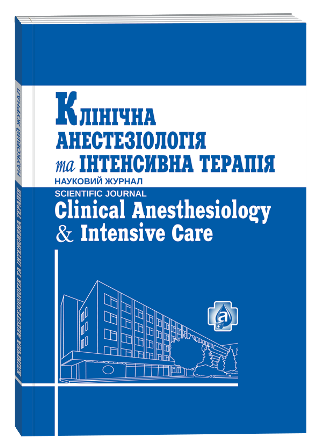NEW TECHNOLOGY OF ORAL ANTICOAGULANTS PHARMACODYNAMICS (ACTING) ASSESSMENT
Keywords:
rivaroxaban, dabigatran etexilate, oral anticoagulants, hemostasisAbstract
Actuality. Currently, attention is paid to “targeted, oral” anticoagulants, direct thrombin inhibitors (IIa factor) — Dabigatran etexilate and Xa inhibitor factor — Rivaroxaban and control methods for their influence on the hemostatic system. The aim of this study was to develop an algorithm estimates the anticoagulant dabigatran etexilate and action Rivaroxaban based on an assessment of the hemostatic potential “global” test — the low-frequency piezoelectric thromboelastography ensuring efficiency, availability, informative, reliability studies. Materials and methods. The study involved 20 healthy volunteers and 20 patients with postthrombophlebitis syndrome. The functional state of hemostasis system was assessed by low-frequency piezoelectric thromboelastography on complex ARP-01M “Mednord”. Results. Statistically significant differences in established groups identified at all stages fibrinogenesis, both among themselves and in the group of healthy volunteers. The peak of the anticoagulant effect of drugs recorded after 4 hours after intake, and the time range from 4 to 8 hours in healthy volunteers and patients postthrombophlebitis syndrome of the first group can be characterized as “hypocoagulation plateau”, which is not observed in patients with postthrombophlebitis syndrome second group. Conclusions. Assessment of hemostatic potential “global” test — low-frequency pyezoelectric thromboelastography provides efficiency, availability, informative, reliability studies. Low-frequency piezoelectric thromboelastography indicators dynamics can be used to monitor the anticoagulant effect of drugs.
References
Яковлев В. М. Соединительнотканная дисплазия костной ткани / В. М. Яковлев, Р. С. Карпов, Е. Г. Бакулина. – Томск : STT, 2004. – 104 с.
Efficacy of intraoperative cell salvage systems in pediatric idiopathic scoliosis patients undergoing posterior spinal fusion with segmental spinal instrumentation / R. E. Bowen, S. Gardner, A. A. Scaduto [et al.] // Spine. – 2010. – Vol. 35. – P. 246–251.
Predicting operative blood loss during spinal fusion for adolescent idiopathic scoliosis / M. N. Ialenti, B. S. Lonner, K. Verma [et al.] // J Pediatr Orthop. – 2013. — Vol. 33 (4). – P. 372–376.
Lipe B. Deficiencies of Natural Anticoagulants, Protein C, Protein S, and Antithrombin / B. Lipe, D. L. Ornstein // Circulation. – 2011. – Vol. 124. – P. 365–368.
Mooney J. F. Validity of Estimates of Intraoperative Blood Loss in Pediatric Spinal Deformity Surgery / J. F. Mooney, W. R. Barfield // J Spine Deformity. – 2013. – Vol. 1. – P. 21–24.
The prevalence of abnormal preoperative coagulation tests in pediatric patients undergoing spinal surgery for scoliosis / K. M. Ryan, K. O’Brien, I. Regan [et al.] // Spine J. – 2013. pii: S1529-9430(13)01381-8 2013.
Reduction of mean arterial pressure at incision reduces blood loss in adolescent idiopathic scoliosis / K. Verma, B. Lonner, L. Dean [et al.] // Spine deformity. – 2013. – Vol. 1. – P. 115–122.







